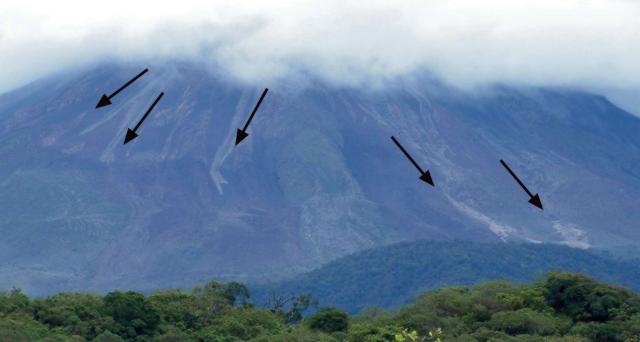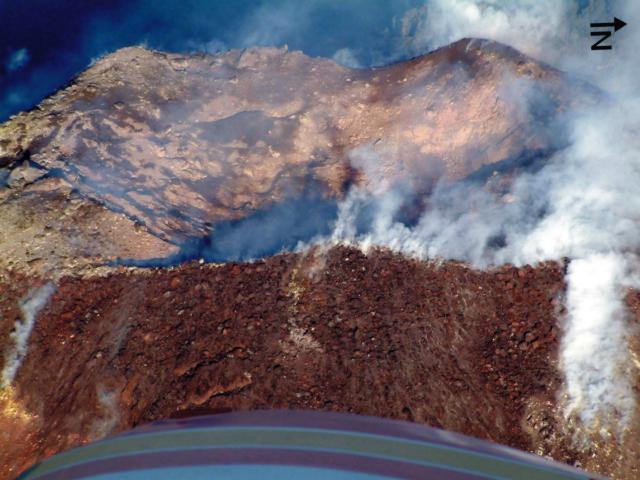Report on Colima (Mexico) — August 2003
Bulletin of the Global Volcanism Network, vol. 28, no. 8 (August 2003)
Managing Editor: Edward Venzke.
Colima (Mexico) Explosions in July and August generate pyroclastic flows and create a new summit crater
Please cite this report as:
Global Volcanism Program, 2003. Report on Colima (Mexico) (Venzke, E., ed.). Bulletin of the Global Volcanism Network, 28:8. Smithsonian Institution. https://doi.org/10.5479/si.GVP.BGVN200308-341040
Colima
Mexico
19.514°N, 103.62°W; summit elev. 3850 m
All times are local (unless otherwise noted)
In February 2003 lava emission at Colima ceased, ending an earlier eruptive stage (BGVN 28:06); after the termination of lava emission a new eruptive stage began. A series of small explosions during March-June was followed by the explosion on 17 July 2003 (BGVN 28:07), the first of three large explosions in July and August. The 17 July explosion sent blocks up to 500 m and an ash column higher than 3,000 m. The explosion was accompanied by five pyroclastic flows with runout distances up to 2 km on the W-SW slopes of the volcano (figure 66).
The second large explosion was recorded on 2 August at 1541. The Washington VAAC reported a plume to ~7.6 km altitude. The third large explosion occurred on 28 August at 2352 and produced an ash column at least 3 km high with ashfall up to 60 km W-NW of the volcano. The explosion was accompanied by pyroclastic flows out to 2.5 km, covering the majority of the volcano's flanks; the total deposit volume was about 244,000 m3.
As a result of this explosion sequence, a new crater 200 m across and 30 m deep formed at the summit (figure 67). About 2 x 106 m3 of the material of the former lava dome was ejected as volcanic bombs and projectiles out to distances of ~1.0-2.5 km. The seismic energy released during these three large explosions was lower than during the 1999 explosions (BGVN 24:01).
Geological Summary. The Colima complex is the most prominent volcanic center of the western Mexican Volcanic Belt. It consists of two southward-younging volcanoes, Nevado de Colima (the high point of the complex) on the north and the historically active Volcán de Colima at the south. A group of late-Pleistocene cinder cones is located on the floor of the Colima graben west and east of the complex. Volcán de Colima (also known as Volcán Fuego) is a youthful stratovolcano constructed within a 5-km-wide scarp, breached to the south, that has been the source of large debris avalanches. Major slope failures have occurred repeatedly from both the Nevado and Colima cones, producing thick debris-avalanche deposits on three sides of the complex. Frequent recorded eruptions date back to the 16th century. Occasional major explosive eruptions have destroyed the summit (most recently in 1913) and left a deep, steep-sided crater that was slowly refilled and then overtopped by lava dome growth.
Information Contacts: Observatorio Vulcanológico de la Universidad de Colima, Colima, Col., 28045, México (URL: https://portal.ucol.mx/cueiv/).



